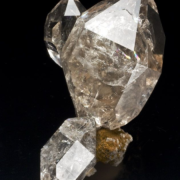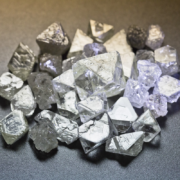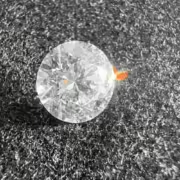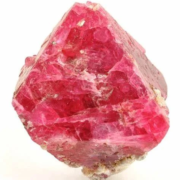The Role of High Pressure and Temperature in Diamond Formation
Diamonds are renowned for their exceptional hardness and beauty, making them highly valued both in jewelry and industrial applications. The formation of natural diamonds is a fascinating process that occurs deep within the Earth’s mantle, involving specific conditions of high pressure and temperature. Understanding these conditions helps explain why diamonds are relatively rare and elucidates the geologic processes involved in their creation.

Contents
- Conditions for Diamond Formation
- Geological Settings for Diamond Formation
- Synthetic Diamond Formation
Conditions for Diamond Formation
- High Pressure:
- Pressure Requirements: Diamonds form at pressures of 4.5 to 6 gigapascals (GPa), which is approximately 45,000 to 60,000 times atmospheric pressure. These pressures are typically found at depths of 140 to 190 kilometers beneath the Earth’s surface.
- Role of Pressure: High pressure is crucial because it forces carbon atoms into a compact, tetrahedral crystal structure, characteristic of diamonds. At lower pressures, carbon atoms form graphite, a more stable allotrope of carbon under surface conditions.
- High Temperature:
- Temperature Requirements: The temperature range for diamond formation is between 900°C and 1,300°C. These temperatures are necessary to provide the energy needed for the rearrangement of carbon atoms into the diamond lattice.
- Role of Temperature: Adequate heat allows carbon atoms to overcome energy barriers and rearrange into the tightly bonded diamond structure. Without sufficient temperature, the kinetic energy of the atoms would be too low to enable this transformation.
Geological Settings for Diamond Formation
 Diamonds Are Forever Revealing New Insights Into Earth’s Development | NSF | Credit:
Diamonds Are Forever Revealing New Insights Into Earth’s Development | NSF | Credit:
Zina Deretsky, National Science Foundation
- Mantle Conditions:
- Depth: The conditions required for diamond formation are typically found at depths of 140 to 190 kilometers in the Earth’s mantle. These depths correspond to the stability field of diamonds, where the pressure and temperature conditions intersect appropriately.
- Carbon Sources: Carbon necessary for diamond formation in the mantle can come from subducted oceanic plates, which introduce carbonates into the mantle, or from primordial carbon sources within the mantle itself.
- Kimberlite and Lamproite Pipes:
- Transport to Surface: Diamonds are brought to the surface through volcanic pipes called kimberlites and lamproites. These pipes are formed by deep-source volcanic eruptions that originate in the mantle and rapidly transport diamonds and other mantle materials to the surface.
- Eruption Characteristics: The rapid ascent of these magmas is essential to preserve diamonds. Slow transport would allow diamonds to transform back into graphite or dissolve due to changes in pressure and temperature.
Synthetic Diamond Formation

- High-Pressure High-Temperature (HPHT) Method:
- Process: The HPHT method replicates natural diamond-forming conditions by applying high pressures (5-6 GPa) and high temperatures (1,300-1,600°C) to a carbon source, often using a metal catalyst to facilitate the process.
- Applications: HPHT diamonds are used in industrial applications (cutting, grinding, drilling) and increasingly in jewelry as the quality of synthetic diamonds improves.
- Chemical Vapor Deposition (CVD) Method:
- Process: CVD involves creating a plasma of carbon-containing gases, such as methane, which then deposit carbon atoms onto a substrate in a controlled manner. While this method operates at lower pressures, it still requires high temperatures (700-1,200°C).
- Applications: CVD allows for the production of high-purity diamonds and the creation of diamond films and coatings for various technological applications.
Conclusion
The formation of diamonds is a testament to the dynamic and powerful processes occurring within the Earth. The specific conditions of high pressure and temperature required for diamond creation illustrate the delicate balance of geological forces at play. Advances in synthetic diamond production continue to provide insights into these natural processes while expanding the availability and application of diamonds in both industrial and commercial sectors.









Leave a Reply
Want to join the discussion?Feel free to contribute!